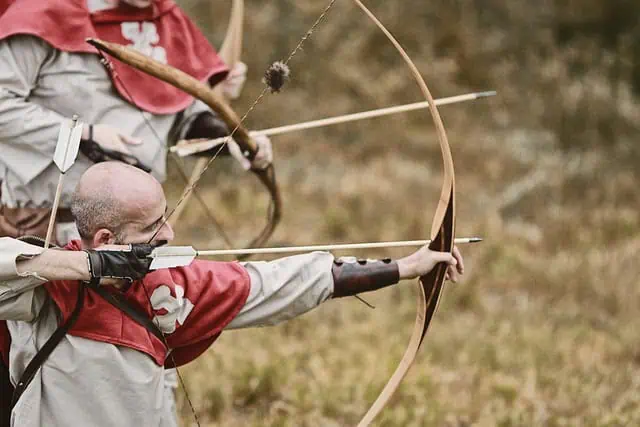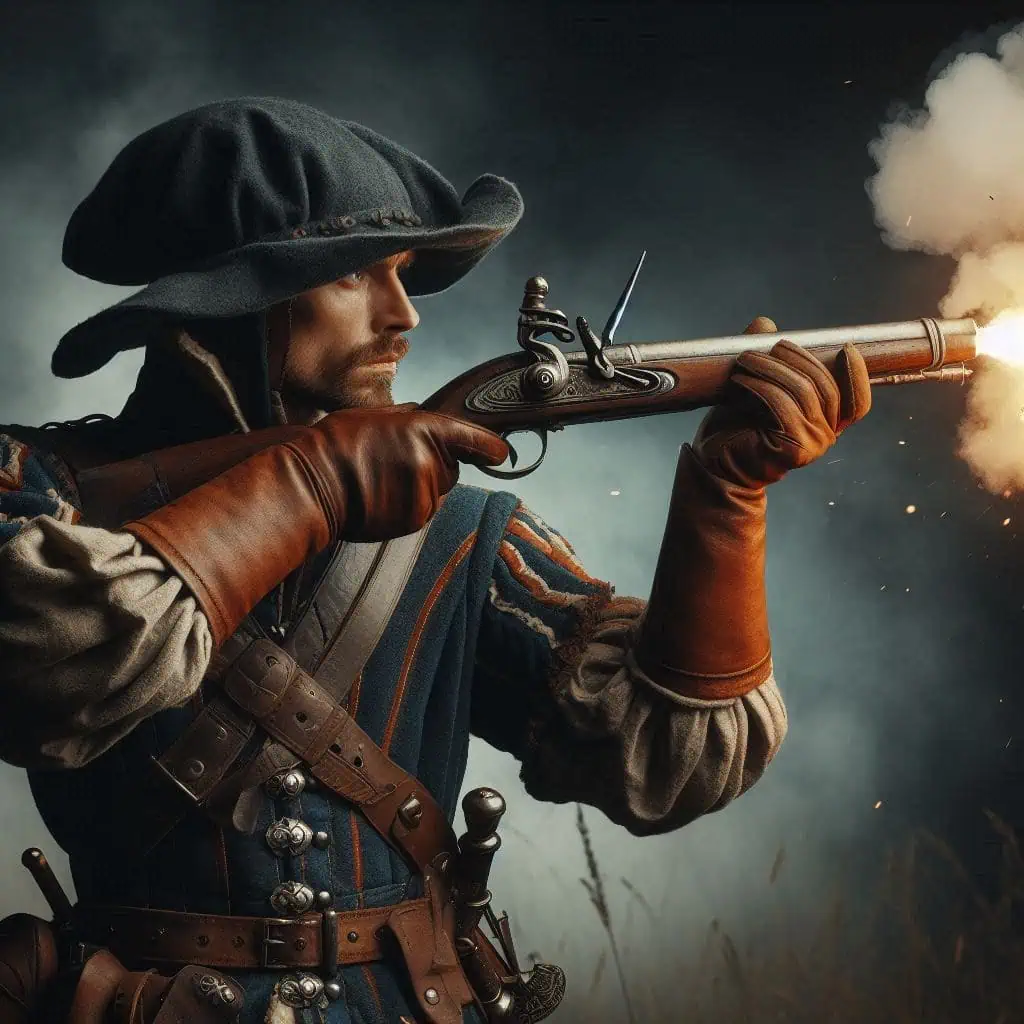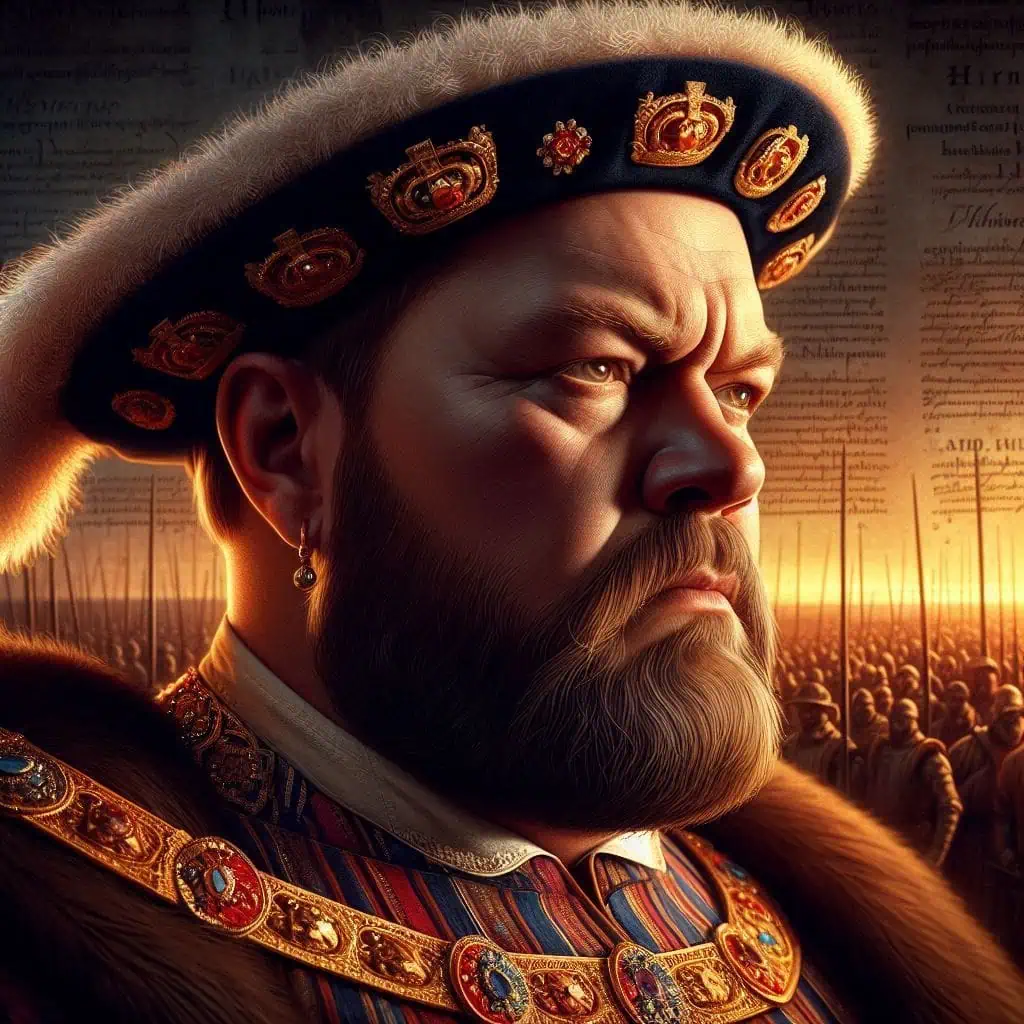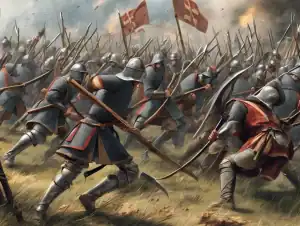The medieval longbow was more than just a weapon—it was a revolutionary force that transformed the way battles were fought in the Middle Ages. Expert English Longbowmen mastered this formidable bow, launching arrows with incredible speed and accuracy that could pierce armor and disrupt enemy formations from a distance. Their skill and discipline made them a cornerstone of military strategy, playing decisive roles in famous conflicts like the Hundred Years’ War. By studying the medieval longbow and the tactics of English Longbowmen, we gain insight into the innovations, training, and battlefield dominance that made this legendary weapon a symbol of medieval warfare.

Medieval Longbows had a long wooden stave usually made of yew wood that had a rounded central section similar to a D shape, they are recorded as being used in ancient times.
The Viking also used Longbows and they were popular weapons throughout the medieval period.
Although longbows were an effective weapon it was not until later in the medieval period that military commanders realised how effective the Longbow could be in battle when used by a large army of tightly packed, highly trained, and organized longbow archers.

Longbow v Crossbow
The longbow was a very effective weapon, but it was harder to use and required greater strength than the crossbow which was easier to load as it had a mechanised loading system, this also meant it took less time to train soldiers to use a Crossbow.
The Longbow had some advantages over the crossbow however as it was easier to load and fire, typically a longbowman archer could fire his arrows at a much faster rate than a crossbowman.

Longbow *Hundred Years War
Longbows really cemented their reputation as invaluable weapons during the hundred years war between England and France and they were the decisive weapons used in many battles such as the battle of Crécy.
During the battle of Crécy around 1000 tightly packed longbowmen were able to defeat the French army conclusively, the well-trained usually dominant French knights had no answer to the constant stream of arrows that rained down on them mercilessly from the longbows of the English archers.

Longbows | How they were made
The medieval Longbow was made from sapwood on the outer side and heartwood on the inside, this gave the body of the longbow called the stave a natural spring which helped produce a powerful firing action.
The typical length of a longbow was around 6 feet and they were designed to be in proportion to the height of the archer using them, so that the draw back was around chest height.

How were Longbows Fired?
In the center of the Longbow stave was a thicker area that was designed to improve grip. The longbow was held in the left hand, the right hand would be used to draw back the string which was usually made of gut or hemp.
The string of the Longbow was looped over each end of the longbow stave, and the center of the string was also strengthened at what was called the nocking point.

Using the medieval Longbow
A Longbowman would draw the longbow string back towards his chest, this required considerable strength, and medieval Longbowmen were very strong people, training was developed to increase the Longbow man’s strength and the constant practice of firing the longbow also helped to improve the longbowman’s strength.
Longbowmen would spend numerous hours learning the best way to fire an arrow from a longbow for the maximum effect, they had to know when to release the arrow at the best moment of the drawback, however, this would eventually become second nature for the medieval Longbowmen after years of practice.

Tactical uses of the Longbow
Longbows could be used in many different ways, some medieval tales described how Robin Hood used the weapon in the woodlands and forests of Nottingham in ambushes, however, it wasn’t until later in the medieval period that the longbow came into its own.
New tactics were developed and medieval Longbow archers were tightly packed together in large units of up to one thousand men, these footsoldiers would fire at enemy positions in unison creating a devastating effect on the enemy forces who were unable to avoid the arrows that rained down on them.
These tactics were used to great effect and were decisive in the following battles of the 100 years war between England and France
- Battle of Crécy 26 August 1346
- Battle of Poitiers 19 September 1356
- Battle of Agincourt 25 October 1415

Longbowmen | Mercenaries
Good Longbowmen were in high demand during later medieval periods due to the effectiveness of these longbow formations and they were wanted all over Europe, many longbowmen realised that they could hire out their services for high rewards and would travel far and wide fighting for any army that would pay them well. Scottish Longbowmen for example were hired by the French during the Hundred Years War to fight against the English.

The end of the Longbow
Just as with other medieval weapons the medieval Longbow declined with the invention of guns and gun powder, Longbowmen were no longer needed as they couldn’t compete with these new weapons, however, the English were reluctant to let go of one of their best medieval weapons and the Longbowmen survived right up until Tudor times even though their effectiveness had declined considerably.

Q1: What is a medieval longbow?
A: The medieval longbow was a powerful type of bow used primarily in Europe during the Middle Ages. It was known for its long range, accuracy, and ability to penetrate armor, making it a game-changing weapon on the battlefield.
Q2: Who were the English Longbowmen?
A: English Longbowmen were skilled archers trained to use the medieval longbow with precision. They played a key role in battles such as Agincourt and Crécy, providing England with a strategic advantage during the Hundred Years’ War.
Q3: Why was the medieval longbow so effective in warfare?
A: The medieval longbow could shoot arrows over long distances with lethal force. Combined with the discipline and training of English Longbowmen, it allowed armies to disrupt enemy formations before they even reached melee range, changing the dynamics of medieval warfare.
Q4: How were English Longbowmen trained?
A: From a young age, English Longbowmen practiced drawing the powerful medieval longbow, developing strength, accuracy, and stamina. Regular practice and strict military discipline made them some of the most feared archers of the Middle Ages.
Q5: What impact did English Longbowmen have on history?
A: The mastery of the medieval longbow by English Longbowmen influenced medieval military strategy and helped England achieve victories in key battles. Their effectiveness marked a shift in warfare, highlighting the importance of ranged weapons and professional archers.

I recently visited the Mary Rose Museum in Portsmouth, and it was an incredible experience for anyone fascinated by the medieval longbow and the legendary English Longbowmen. Walking through the galleries, I saw rows of meticulously preserved Tudor-era longbows, some still bearing the marks of centuries-old use. There were over 170 bows on display, along with thousands of arrows, each telling a story of life at sea and on the battlefield. One exhibit that particularly caught my eye was the skeletal remains of an archer, accompanied by his bow and leather wristguard, a poignant reminder of the skill and discipline of English Longbowmen. The museum doesn’t just display weapons—it immerses you in the history, tactics, and daily life of the archers who changed the course of warfare. Every detail, from the construction of the bows to the artifacts recovered from the shipwreck, brought the era of the medieval longbow vividly to life.
Museums to See Medieval Longbows and English Longbowmen Artifacts
🏺 The Mary Rose Museum – Portsmouth, Hampshire
- Website: maryrose.org
- Highlights: Home to Henry VIII’s flagship and the world’s largest collection of Tudor artefacts, including over 170 longbows and thousands of arrows.
🏹 John Moore Museum – Tewkesbury, Gloucestershire
- Website: johnmooremuseum.org
- Highlights: Features a comprehensive natural history collection and a Tudor Merchant’s House, offering insights into medieval life and archery.
🏰 Rye Castle Museum (Ypres Tower) – Rye, East Sussex
- Website: ryemuseum.co.uk
- Highlights: A 13th-century castle housing exhibits on medieval weaponry, including a longbow chosen by a young visitor, and the history of the English Longbowmen.
🏛️ Oxford University Museum of Natural History – Oxford
- Website: oumnh.ox.ac.uk
- Highlights: Displays a replica of a Tudor-period English longbow, carved from a single stave of Spanish yew, offering a tangible connection to medieval craftsmanship.
🏡 Weald & Downland Living Museum – Singleton, West Sussex
- Website: wealddown.co.uk
- Highlights: An open-air museum with hands-on experiences in traditional crafts and skills, including longbow archery workshops, providing a unique opportunity to experience medieval archery firsthand.



